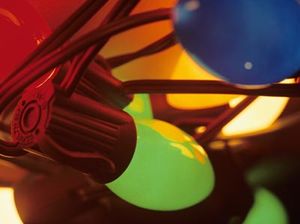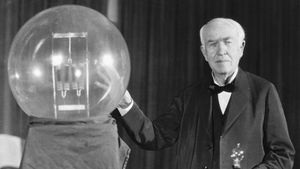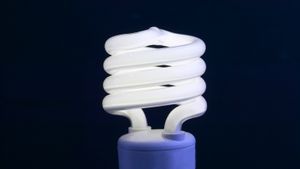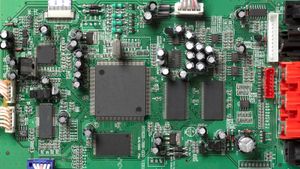Christmas Mini-lights

The 1970s saw a revolution in decorative lighting: Mini-lights were introduced. They now dominate the market when it comes to strands of lights. A mini-light is a small, 2.5-volt incandescent bulb. These bulbs are not much different from any incandescent flashlight bulb (see below for details).
Given that you are plugging these 2.5-volt mini-lights into a 120-volt outlet, the obvious question is, "How can that work?"
Advertisement
The key to using these small, low-voltage bulbs with normal house current is to connect them in series. If you multiply 2.5 volts by 48, you get 120 volts, and originally, that's how many bulbs the strands had. A typical strand today adds two more bulbs so that there are 50 lights in the strand — a nice round number. Adding the two extras dims the set imperceptibly, so it doesn't matter. The lights in a 50-bulb strand are wired as a "series" of lights along one electrical path. So electricity must pass from one light to the next for the entire strand to light up. When a filament in one bulb blows out, it creates an open circuit in the wiring, so electricity is not passed along.
This explains why mini-light strands are so sensitive to the removal of one bulb. It breaks the circuit, so none of the bulbs can light. When mini-lights were first introduced, any bulb burning out would darken the entire strand. Today, the bulbs can burn out, and the strand will stay lit, but if you pop one of the bulbs out of its socket, the whole strand will go dark. This difference in behavior occurs because the new bulbs contain an internal shunt.
If you look closely at a bulb, you can see the shunt wire wrapped around the two posts inside the bulb. The shunt wire contains a coating that gives it fairly high resistance until the filament fails. At that point, heat caused by current flowing through the shunt burns off the coating and reduces the shunt's resistance. (A typical bulb has a resistance of 7 to 8 ohms through the filament and 2 to 3 ohms through the shunt once the coating burns off.)
Several series or groups of lights can be wired to just one plug. This is known as being wired in parallel. Although you can buy simple 50-bulb strands, it is more common to see 100- or 150-bulb strands. These strands are simply two or three 50-bulb stands in parallel. If you remove one of the bulbs, its 50-bulb strand will go out, but the remaining strands will be unaffected. If you look at a strand wired, you will see that there is a third wire running along the strand, either from the plug or from the first bulb. This wire provides the parallel connection down the line.
The big advantages of mini-bulb strands are the low wattage (about 25 watts per 50-bulb strand) and the low cost (the bulbs, sockets and wire are all much less expensive than a 120-volt parallel system). The big disadvantage is the problem of loose bulbs. Unless there is a shunt in the socket, a loose bulb will cause the whole 50-bulb strand to fail. It's not hard to have a loose bulb because the sockets are pretty flimsy. There are inexpensive testers on the market that can help find loose bulbs faster. You point the tester at each bulb and it tells you which bulb is loose.
In the next section, we'll take a look at how blinking lights work.











